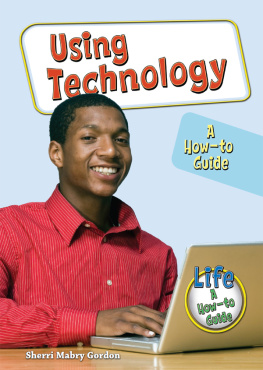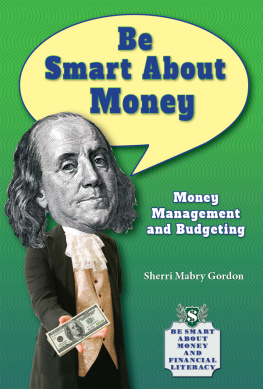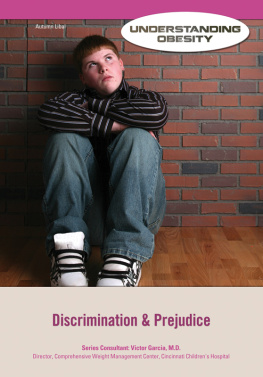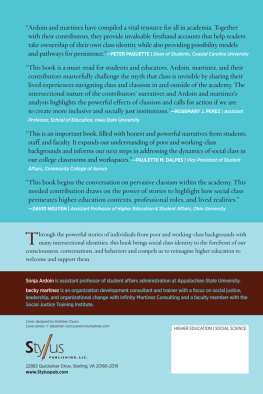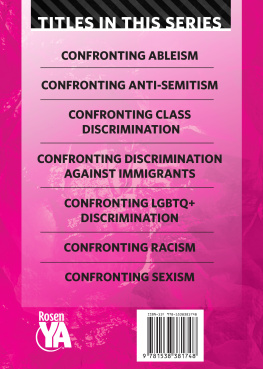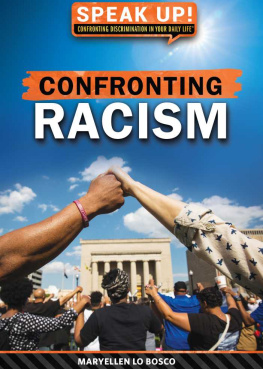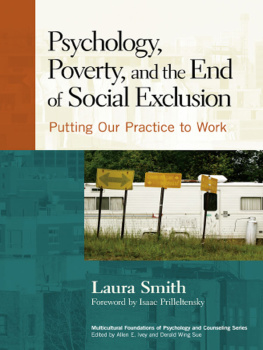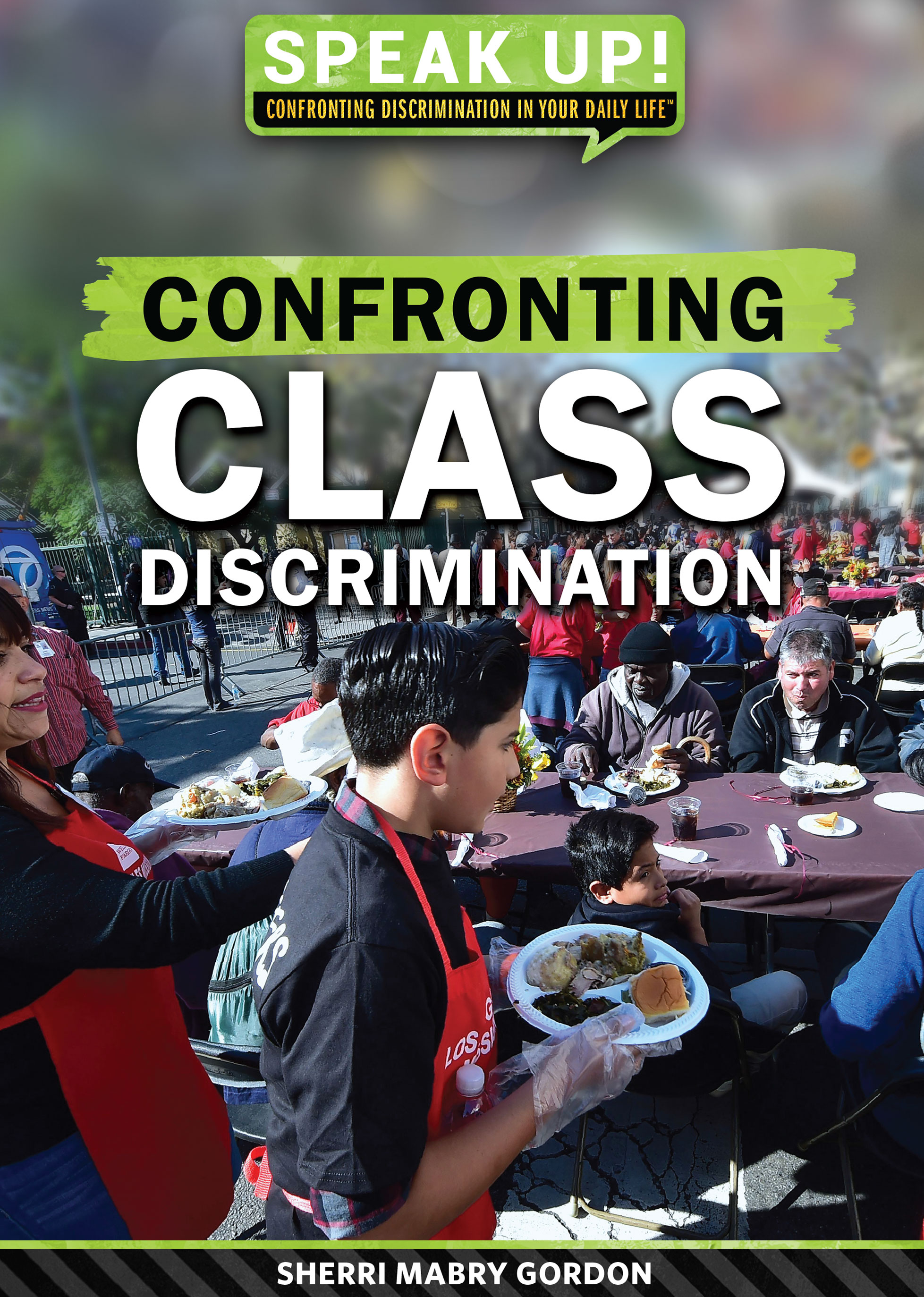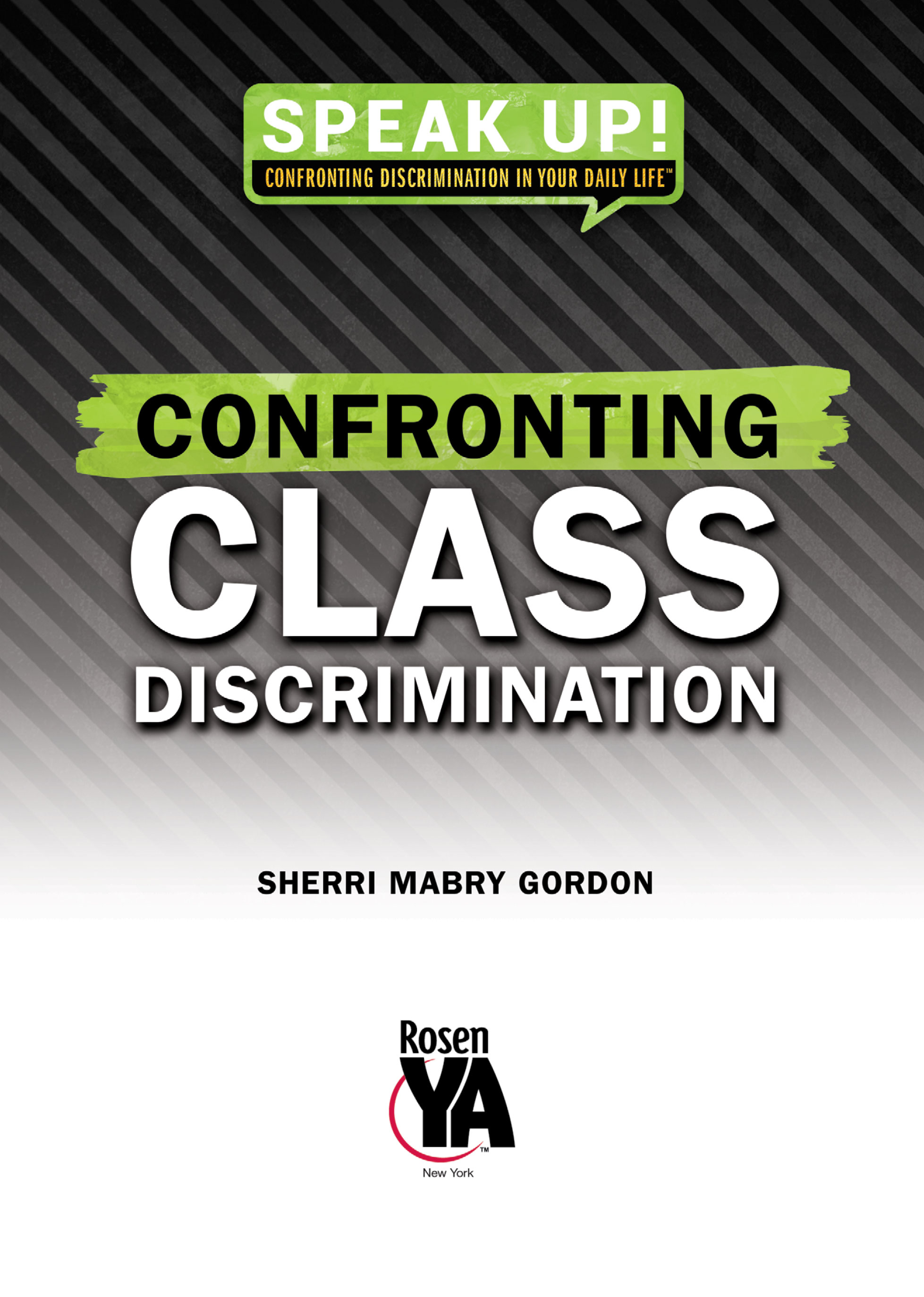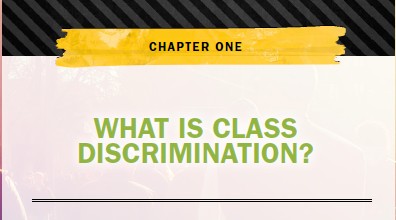- CHAPTER ONE:
WHAT IS CLASS DISCRIMINATION? - CHAPTER TWO:
WHAT IMPACT DOES CLASSISM HAVE? - CHAPTER THREE:
HOW ARE PEOPLE DISCRIMINATED AGAINST? - CHAPTER FOUR:
TAKING A STAND AGAINST CLASSISM - CHAPTER FIVE:
ENDING CLASSISM IN YOUR EVERYDAY LIFE
Published in 2018 by The Rosen Publishing Group, Inc.
29 East 21st Street, New York, NY 10010
Copyright 2018 by The Rosen Publishing Group, Inc.
First Edition
All rights reserved. No part of this book may be reproduced in any form without permission in writing from the publisher, except by a reviewer.
Library of Congress Cataloging-in-Publication Data
Names: Gordon, Sherri Mabry, author.
Title: Confronting class discrimination / Sherri Mabry Gordon. Description: New York : Rosen Publishing, 2018 | Series: Speak up! Confronting discrimination in your daily life | Audience: Grades 7-12. | Includes bibliographical references and index.
Identifiers: LCCN 2017017496| ISBN 9781538381700 (library bound) | ISBN 9781538381687 (pbk.) | ISBN 9781538381694 (6 pack)
Subjects: LCSH: ClassismUnited StatesJuvenile literature. | DiscriminationUnited StatesJuvenile literature.
Classification: LCC HN90.S6 G67 2017 | DDC 305.50973 dc23
LC record available at https://lccn.loc.gov/2017017496
Manufactured in the United States of America
CHAPTER ONE:
WHAT IS CLASS DISCRIMINATION?
CHAPTER TWO:
WHAT IMPACT DOES CLASSISM HAVE?
CHAPTER THREE:
HOW ARE PEOPLE DISCRIMINATED AGAINST?
CHAPTER FOUR:
TAKING A STAND AGAINST CLASSISM
CHAPTER FIVE:
ENDING CLASSISM IN YOUR EVERYDAY LIFE
INTRODUCTION
S am* grew up in a rural community where most of his classmates came from similar economic backgrounds. In fact, he rarely noticed class discrimination until he went off to college. But while attending Ohio State University in Columbus, Ohio, he was forced to face the fact that he came from more modest means than some of his classmates.
Looking back, high school was easy, Sam recalls. We were all really about the same with some slight variances. But [class discrimination] really hit in college. Social activities, classes, jobsthe rich kids made an effort to make others feel inferior. The jobs I had in college had me working for rich people. They seemed to make a point to let you know the difference.
Even though Sam was one of only a few kids from his high school to attend college, he knew from a young age that he wanted to do more with his life than get a job and get married. He watched his older brothers get good grades and leave for college, and he planned to do the same.
Back then, not a lot of kids went to college, Sam explains. If I had been the oldest, I might [not have continued going to school.] But while it wasnt easy to pay for school, I had older siblings that lived the same life I did but were smarter than everyone else. I learned in elementary school that bank accounts had no effect on GPA. I wanted to be like my older brothers more than I wanted to be like anyone else.
Attending college as a low-income student comes with challenges. Many times, poorer students are excluded from clubs, events, and social activities because of income.
Today, Sam is a marketing and design professionalliving in an upper-middle-class suburb outside ofColumbus, Ohio. Yet, he still notices how classismimpacts those around him.
It has gotten a lot worse, he says. Maybe backthen I was too nave, but I still see [discrimination] inevery aspect of life. The thing that stands out most is that as [some] people climb a little, they feel the need to look down on those below them to make themselves feel better. I would like to say that is a bad generalization, but the exceptions are very few. Im not sure where society came off the tracks. *Please note that the interview sources name has been changed to protect his identity.
The move from one social class to another is not always easy. Despite making more money and belonging to a higher class, many people who were once poor still experience discrimination.
R ecall the story of the Disney film Aladdin.A young man is living on the streets. To survive, he steals food from the marketplace but dreams of escaping his life of poverty and living in a palace someday. Meanwhile, a beautiful princess, Jasmine, is being forced into an arranged marriage in a nearby castle. Because she wants to marry for love and not based on wealth or class, she dresses as a peasant and flees the castle. Once in the marketplace, she meets Aladdin.
While they both realize they have a lot in common, they also know their class differences in society will prevent them from being together. It is not until Aladdin gets his hands on a magic lamp and wishes to be turned into a prince that they can finally be together. Although Aladdinis a classic rags to riches romance, it is also a clear illustration of classism and the barriers that exist between the wealthy and the poor.
As in the example above, it can be very difficult for the poor to cross barriers and have meaningful relationships with the wealthy. Even if two young people can move beyond or outside of the class barriers that would hold them back, others in their class may find their relationship hard to accept. Whats more, despite advertising a positive message about class mobility, Aladdinsuggestively perpetuates accepted stereotypes about the poor by displaying Aladdin as homeless and a thief.
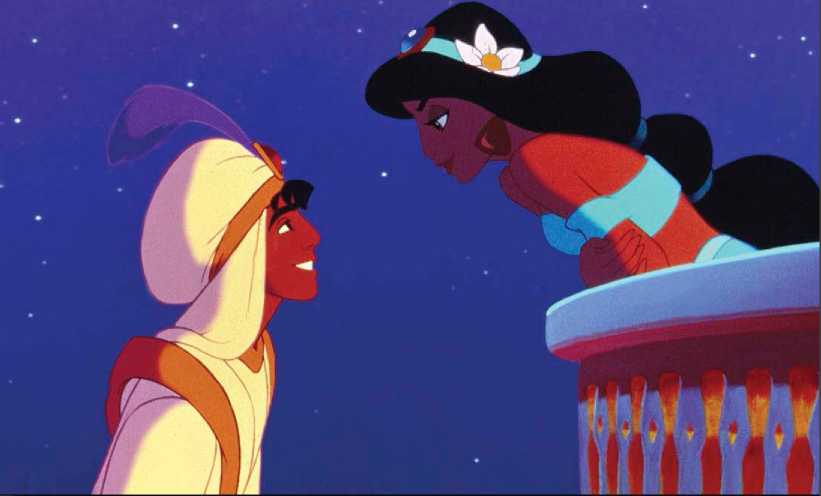
The Disney movie Aladdin is a classic "rags to riches romance. It is also an example of classism and how the wealthy and poor interact. It is not a new story; Aladdin can be traced back to the Arabian Nights (c. ninth century).
WHAT IS CLASSISM?
Classism, or class discrimination, is prejudice based on a persons social class. In other words, people are discriminated against or treated unfairly based on the class to which they belong. Typically, this means that the poor are often treated unfairly because of their lower position in society. Meanwhile, those in the higher classes typically have more power and privilege. In other words, people from lower social classes are excluded, devalued, and separated from others while those in the wealthy and middle classes have access to better education and more opportunities. This often results in extreme inequality among the rich and the poor.
To better understand classism, it is important to look at four basic types. These types include individual, institutional, cultural, and internalized classism. With individual classism, a persons thoughts or behaviors lead to discrimination based on social class. An example might be a woman who assumes that all people from a particular neighborhood are dangerous and immoral.



